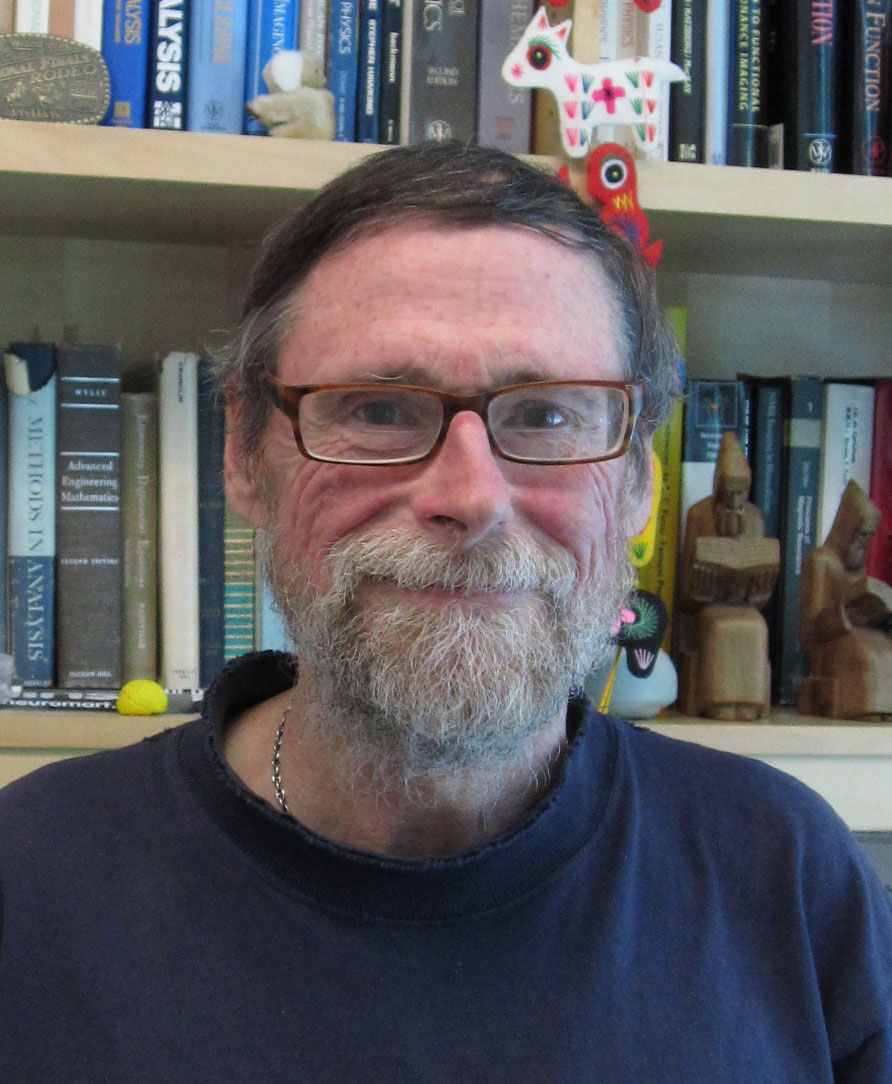 |
|
||||||||||
|
My research interests encompass the physics and mathematics of imaging with Magnetic Resonance. Presently my research is directed in part towards exploration of rapid MRI scanning methods using spiral and other non-Cartesian k-space trajectories for dynamic imaging of function. Using spiral techniques, we have developed MRI pulse sequences and processing methods for mapping cortical brain function by imaging the metabolic response to various stimuli, with applications in the basic neurosciences as well as for clinical applications. These methods develop differential image contrast from hemodynamically driven increases in oxygen content in the vascular bed of activated cortex, using pulse sequences sensitive to the paramagnetic behavior of deoxyhemoglobin or to the blood flow changes. Other applications include imaging of contrast uptake in the breast. Representative PublicationsPfeuffer J, Van de Mortelle PF, Ugurbil K, Hu X, Glover, GH. Correction of physiologically induced global off-resonance effects in dynamic echo-planar and spiral functional imaging. Magn. Reson. Med. 47:344-353 (2002). Preston, AR; Thomason, ME; Ochsner, KN; Cooper, JC; and Glover, GH. Comparison of Spiral-In/Out and Spiral-out BOLD fMRI at 1.5T and 3T. NeuroImage 21:291-301 (2004). G. Srivastava; S. Crottaz-Herbette; K.M. Lau; G.H. Glover and V. Menon. ICA-based procedures for removing ballistocardiogram artifacts from EEG data acquired in the MRI scanner. NeuroImage 24:50-60 (2005). Hsu, JJ; Glover, GH. Mitigation of susceptibility-induced signal loss in neuroimaging using localized shim coils. Magn. Reson. Med. 53:243-248 (2005) deCharms, RC; Maeda F; Glover GH; Ludlow D; Pauly, JM; Soneji D; Gabrieli JDE; Mackey SC. Control Over Brain Activation and Pain Learned Using Real Time fMRI. PNAS 102:18626-31 (2005). Friedman L; Glover GH. Reducing Inter-Scanner Variability of Activation in a Multi-center fMRI Study: Controlling for Signal-to- Fluctuation-Noise-Ratio (SFNR) Differences. NeuroImage 33:471-81 (2006). Thomason ME; Foland LC; Glover GH. Calibration of BOLD fMRI using Breath-holding reduces group variance during a cognitive task. Human Brain Mapping 28:59-68 (2007). Hu YL, Glover GH. 3D spiral technique for high resolution fMRI. MRM 58(5):947-51 (2007). Law CS; Liu C; Glover GH. Sliding Window SENSE Calibration for Reducing Noise in fMRI. Magn Reson Med. 2008 Nov;60(5):1090-103. Chang CE; Cunningham JP; Glover GH. Influence of heart rate on the BOLD signal: The cardiac response function. NeuroImage 44:857-69 (2009). Law CS; Glover GH. Interleaved Spiral-In/Out with Application to fMRI. Magn Res Med. 62:829-34 (2009). Chang CE; Glover GH. Relationship between respiration, end-tidal CO2, and BOLD signals in resting-state fMRI. NeuroImage 47:1381-93 (2009). Chang CE; Glover GH. Effects of model-based physiological noise correction on default mode network anti-correlations and correlations. NeuroImage 47:1448-59 (2009). Chang CE; Glover GH. Time-frequency dynamics of resting-state brain connectivity measured with fMRI. NeuroImage 50:81-89 (2010). Rakow-Penner R; Daniel B; Glover GH. Detecting Blood Oxygen Level Dependent Contrast in the Breast. JMRI 32:120-129 (2010).
CV with list of publications. Last modified on September 28, 2013 |
|||||||||||

|